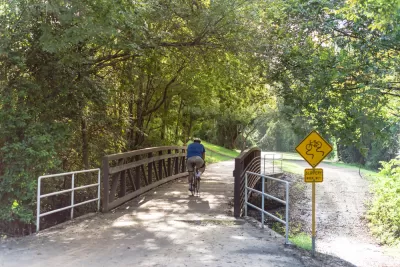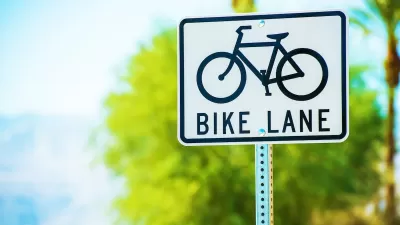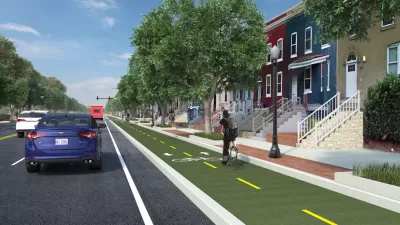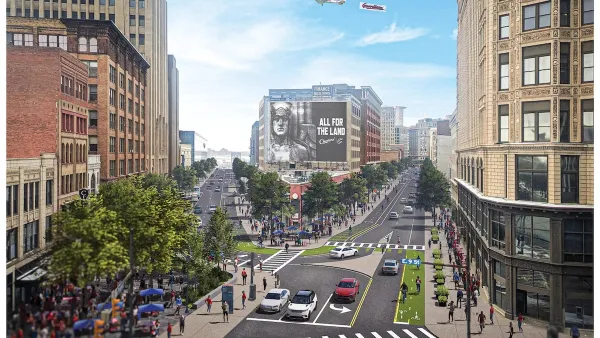The famously car-centric city is investing more than ever in bike infrastructure, with ambitious plans to build 1,800 miles of protected bike lanes and trails.

“Is Houston becoming more bike-friendly?” asks an article by Dug Begley. According to the article, the city has considerably more bike lanes than it did a decade ago. “What exactly has happened, however, is hard to pinpoint, said BikeHouston executive director Joe Cutrufo.”
The city doesn’t exactly have a reputation for bike friendliness. “Many cities, in the past five or six years, outpaced Houston in creating on-street bicycle lanes, often protected by parking on the street or reflective sticks.” In fact, Houston has often found itself at the bottom of “bike friendliness” lists. “What is unclear, for now, is how Houston will rank in the next couple years because of investments by Harris County Precinct One Commissioner Rodney Ellis on local streets, City Hall committing to expanded bike lanes along some routes, and new trails along various bayous developed by the Houston Parks Board and area management districts.”
As the article notes, “Protection, or the sense of protection can be a huge factor in how often and who uses bike lanes. New green lanes along Waugh, Commonwealth, Gray and Austin all feature large concrete curbs that are much harder for cars and trucks to simply leap,” making more people feel safe on Houston streets.
“The city’s bike plan — for 1,800 miles of safe trails and protected lanes — maps out where trails are wanted and where they should be aligned with the recent work.” However, Begley writes, “Of the 1,800 miles planned, less than 400 miles of it is complete. Fewer than 30 miles of protected on-street lanes exist — through that is up from less than 13 miles six years ago, when Houston Mayor Sylvester Turner called for a ‘paradigm shift’ in the city’s transportation system.”
The city’s efforts to improve bike safety are laudable in light of some grim statistics. “The number of pedestrians and cyclists killed annually in Harris County has jumped from 113 in 2015, to 193 last year. The 24 cyclists killed in 2021 were double the total for 2016.”
FULL STORY: Is Houston becoming more bike-friendly? A car-free developer says yes.

Planetizen Federal Action Tracker
A weekly monitor of how Trump’s orders and actions are impacting planners and planning in America.

DARTSpace Platform Streamlines Dallas TOD Application Process
The Dallas transit agency hopes a shorter permitting timeline will boost transit-oriented development around rail stations.

Four Reasons Urban Planners Can’t Ignore AI
It’s no longer a question of whether AI will shape planning, but how. That how is up to us.

Amtrak’s Borealis Exceeds First Year Ridership Expectations
205,800 passengers have boarded the St. Paul to Chicago line, well above initial MDOT projections.

Study: 4% of Truckers Lack a Valid Commercial License
Over 56% of inspected trucks had other violations.

Chicago Judge Orders Thousands of Accessible Ped Signals
Only 3% of the city's crossing signals are currently accessible to blind pedestrians.
Urban Design for Planners 1: Software Tools
This six-course series explores essential urban design concepts using open source software and equips planners with the tools they need to participate fully in the urban design process.
Planning for Universal Design
Learn the tools for implementing Universal Design in planning regulations.
City of Mt Shasta
City of Camden Redevelopment Agency
City of Astoria
Transportation Research & Education Center (TREC) at Portland State University
US High Speed Rail Association
City of Camden Redevelopment Agency
Municipality of Princeton (NJ)





























